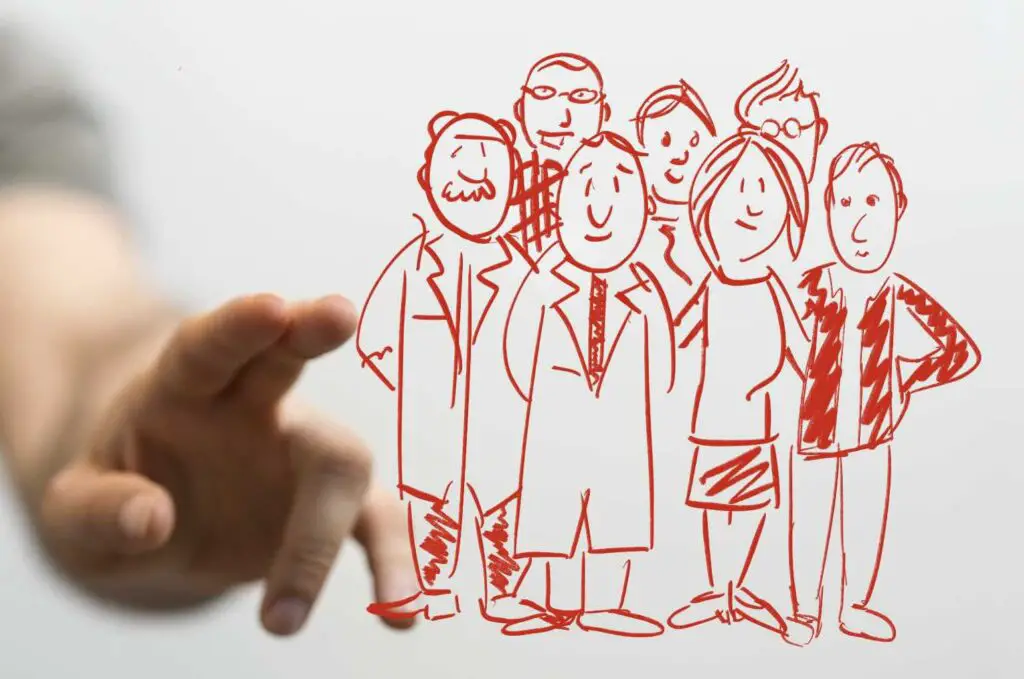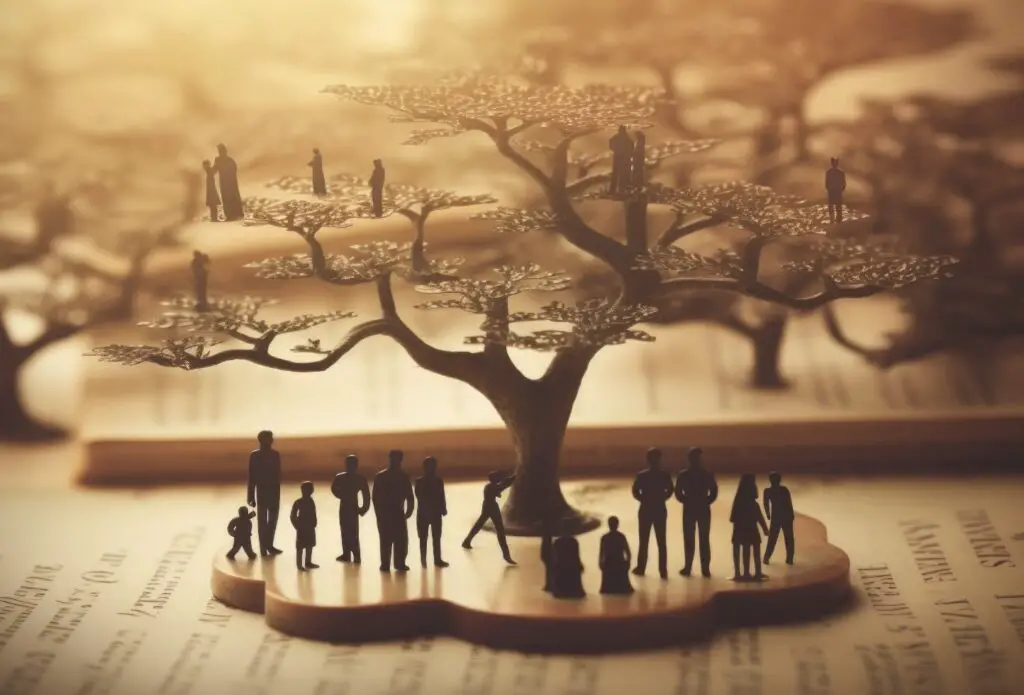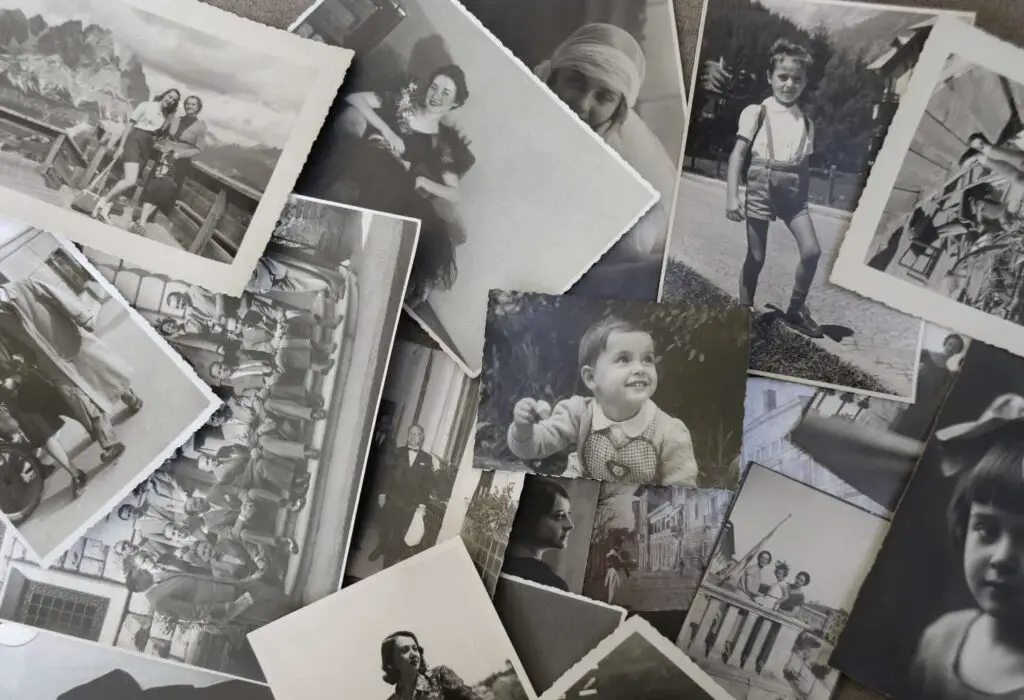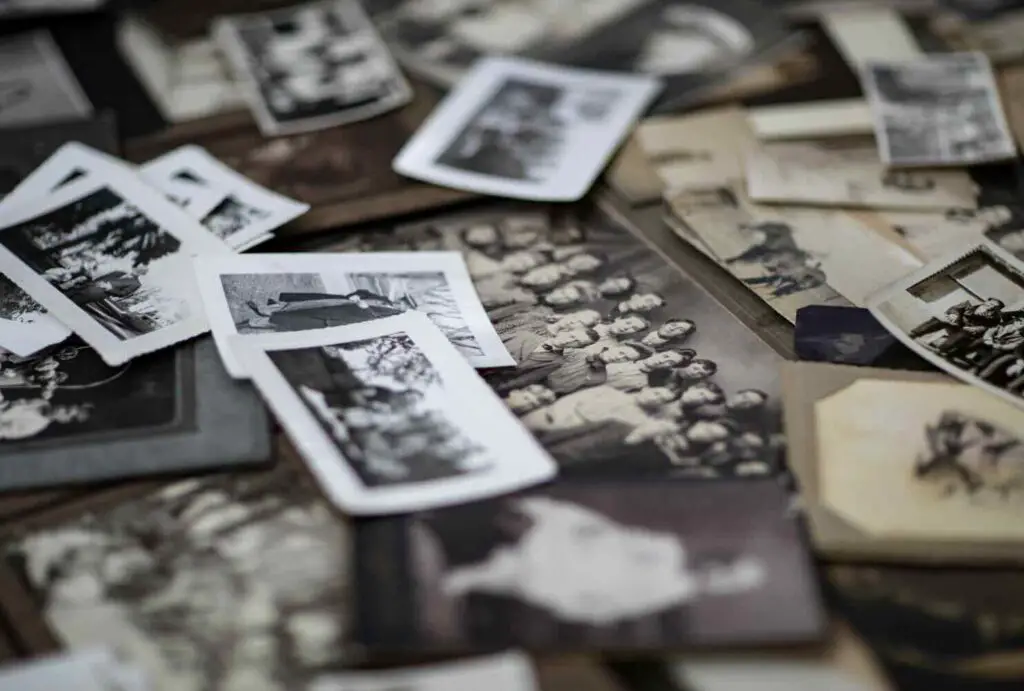The world of television has evolved substantially over the years, bringing to its audience a variety of shows ranging from drama and science fiction to reality and talk shows. One type of programming that has indeed seized viewers’ attention and sparked curiosity is genealogy shows.
This intriguing phenomenon delves deep into family history, ancestral origins, and heritage, providing a captivating past and present merge. The following discourse will travel through the time and transformation of genealogy shows, their societal impact, and the scientific principles they rely upon. It will also offer a critical viewpoint on their credibility and future trajectory.
Table of Contents
- The Origin and Growth of Genealogy Shows
- Societal Impact of Genealogy Shows
- Science Behind Genealogy Shows
- Critical Analysis of Genealogy Shows
- Related Questions
The Origin and Growth of Genealogy Shows
Genealogy Shows: Tracing the Emergence and Evolution over Time
Genealogy is the scientific pursuit that reaches deep into the past, revealing the intricate bonds uniting families across generations. Fascinatingly, this academic discipline has successfully leaped into the popular domain through genealogy-themed television shows. These shows allow a broad demographic to explore the profound implications of their heritage while engendering a deeper appreciation for history.
Delving into this phenomenon, the inaugural genealogy-themed show is widely recognized as PBS’s “Ancestors.” Debuting in 1997, this multi-part series presented a comprehensive guide on how to conduct genealogical research. Unlike most contemporary counterparts, “Ancestors” focused primarily on demonstration and education rather than individual exploration.
BBC’s “Who Do You Think You Are?” was a significant turning point, establishing the format genre enthusiasts instantly recognize today. Premiered in 2004, the show spotlighted celebrities delving into their family histories, highlighting emotional moments and surprising discoveries. Placing personal storytelling at the forefront, “Who Do You Think You Are?” revolutionized the landscape of this genre.
Since then, the genealogy show format has continued to evolve and diversify. The American adaptation of “Who Do You Think You Are?” capitalized on the celebrity trend; the more academic “Finding Your Roots” with Henry Louis Gates Jr. brought a scholarly touch to the domain.
Interestingly, genealogy shows have also embraced the digital age. Evidence can be seen in TLC’s “Long Lost Family,” a dynamic show highlighting contemporary technology’s role in reuniting separated families. These advancements bring the simultaneous efficiency and complexity of genealogical research to the living rooms and provide critical perspectives on the human condition and social constructs.
The introduction of genetic genealogy further augments the curiosity and appeal of these shows. Programs like “Genealogy Roadshow” incorporated DNA testing into their framework, transforming personal anecdotal family histories into verified genetic lineages. This fusion underscores how the scientific advancements of genealogy play out on a personal and emotional stage in front of millions.
The relentless popularity of these genealogy shows brings this interpretive science to the broadways of public consumption. They serve not merely as a form of edutainment but as a catalyst for individuals to uncover their ancestral roots while furthering our understanding of humanity’s interconnected, intricate past.

Societal Impact of Genealogy Shows
Undeniably, genealogy-focused television programs have awakened a burgeoning societal fascination with the exploration of family history. This can be seen tangibly in the rising popularity of commercial genetic testing services such as Ancestry and 23andMe, spurring a multimillion-dollar genetic genealogy industry.
One significant impact of genealogy shows has been the democratization of access to genealogical data, once confined to dusty archives and typically the pursuit of dedicated historians. These shows have put sophisticated research techniques and tools into the hands of any curious individual, vastly increasing public participation in genealogical research.
Furthermore, they have indirectly driven innovations and improvements in technology and internet resources related to genealogy. The digital platforms hosting these genealogy-themed television programs and providing auxiliary research services have witnessed exponential user numbers and overall site traffic growth.
This increased demand for information and resources, in turn, fuels technological advancements, modernizing archival databases and creating more user-friendly genealogical research tools.
Genealogy programming of the televised variety arguably serves an educative purpose. The programs showcase often complex methodology behind kinship studies. These shows implicitly provide a tutorial to millions of viewers on how to embark on their genealogical journey.
As such, individuals have been stimulated to engage in historical exploration, transforming personal identity and broadening the understanding of sociocultural evolution and historical events.
Moreover, by affording genealogy a mainstream status, these television shows tap into an inherent human yearning to understand one’s identity in a broader context, consequently inviting a dialogue on race, ethnicity, and heritage. This has propelled societal conversations around diversity and multicultural heritage, expanding our appreciation of varied cultural phenomenons.
The dominantly emotional narratives, beautifully woven with anthropological facts, draw wholesome pictures of what it means to belong. Exposure to various ethnic backgrounds and ancestry paths fosters empathy and bridges cultural gaps in understanding, facilitating a more inclusive society.
In conclusion, the societal impact of genealogy shows an intricate mosaic of individual identity exploration, advancements in related technology, and a heightened cultural understanding.
Through their unique way of linking personal journeys to the human collective story, these shows have reignited an interest in genealogy among the general public, proving that exploring our past is not just a hobby for a few history buffs but a universally shared curiosity opening dialogues on identity and heritage.

Science Behind Genealogy Shows
Expanding upon these themes, it is vital to grasp how these TV shows employ various scientific techniques and methods to unravel the ancestral mysteries. Pervading these genealogy shows, DNA testing and genetic genealogy have become the cornerstone of their investigative processes.
Genealogical quest driven by science is not confined within the boundaries of traditional archival research. It transcends into the field of genetics, where DNA becomes the manuscript that reveals familial narratives etched in its code.
This genealogy meticulously exploits the caliber of DNA as a factual, unbiased chronicle of unresolved familial puzzles. Autosomal DNA testing, one of the widely employed tests, scrutinizes large sections of the genome that translates into a potential treasure trove of ancestral insights. It enables a broad spectrum match, tracing maternal and paternal lineages, encompassing several generations.
The employment of mitochondrial DNA testing focuses on tracking the maternal lineage. A precise maternal ancestry is mapped out by analyzing DNA in the mitochondria, passed only from a mother to her children.
On the other hand, Y-chromosome testing targets the paternal lineage, tracing the direct ancestral lines of men. These DNA testing procedures underpin the unraveling of ancestry, enabling a breakthrough in complex genealogical puzzles.
Complementing the DNA testing procedures, innovative data interpretation and visualization software plays a pivotal role in processing and translating DNA data into extensively connected family trees.
The efficacious coupling of data science analytics with biological samples refines the procedure of ancestral tracing, enabling extensive mapping of genealogical links and enhancing the viewers’ comprehension of heritage and pedigree.
Moreover, digitizing extensive archives populated with preserved documents, photographs, diaries, and numerous other genealogical records navigates through the historical voyages of families. Advanced algorithms perpetually propel the scouring of billions of archived records, aiding in the unearthing of unparalleled insights into an individual’s familial past.
The fusion of genetics, data science, and historical research within these genealogy shows opens up a vista of boundless ancestral exploration. They craft a platform where science and story interweave, enabling a broader understanding of their interconnected ancestral tapestry among viewers.
Thus, the scientific rigor coupled with narrative engagement in genealogy shows catalyzes the popularization of these programs. Ultimately, it fosters an enriched understanding of the boundless nuances of global heritage and the intricacies of deep-rooted personal histories.
While the genealogy-themed TV shows serve as a minuscule representation of the extensive genre of scientific television, it is pertinent to appreciate the broader impact these programs have on explaining the realm of science to a broader audience. The union of traditional research methodologies with cutting-edge genetic testing procedures stands as an emulation of the evolving model of scientific exploration in the modern era.
Therefore, as the public’s interest in self-discovery and ancestral origins grows, genealogy shows continue leveraging scientific advancements to bridge the gap between science and society, nurturing a culture that values science and appreciates its pervasive connection with everyday life.

Critical Analysis of Genealogy Shows
Upon undertaking a critical analysis of genealogy-centered television, several development threads that play pivotal roles in the genre’s popular perception and cultural significance are unveiled.
Undeniably, these productions have harnessed a unique fusion of scientific rigor, powerful narratives, and technologically-driven research methods, making them not just vehicles of entertainment but, in essence, dynamic knowledge hubs.
In retrospect, a critical evaluation of genealogy accentuates the transformative role of technological advancements in catalyzing paradigm shifts in the perception and pursuit of genealogical inquiry.
Case in point, DNA testing as a tool in genetic genealogy has revolutionized the landscape of ancestral investigations, offering exhaustive insights into human lineage and heritage like never before. The application of autosomal DNA testing in these shows has granted access to information about one’s ancestral homes and ethnicities, hitherto unseen.
Further, through innovative applications of mitochondrial DNA testing, these programs have successfully tracked and showcased maternal lineage spanning countless generations. In contrast, Y-chromosome testing has effectively traced paternal lineage with remarkable accuracy.
As the bridge between science and society has become increasingly narrower, these programs have pushed the frontier of data interpretation and visualization. Technological ingenuities have made it possible to decipher the extensive data procured from DNA tests.
Such comprehensive data interpretation has facilitated tracking far-reaching lineages and played an instrumental role in unraveling previously untapped dimensions in historical research.
Coupled with the digitization of genealogical records, these initiatives have produced an abundant reservoir of research that is accessible and engaging for both hobbyists and scholars alike.
Analyzing these developments with a broader lens, one can discern the paradigmatic shift in the model of scientific exploration. Genealogy shows have often been applauded for striking a balance between scientific authenticity and narrative engagement, contributing to their popularity and longevity in mainstream media.
Further, the genre has played a vital role in demystifying complex scientific concepts, hence debunking the myth of science as an esoteric domain and bringing it closer to the public sphere.
In essence, genealogy shows have transcended the traditional boundaries of informational programming. The genre defies singular categorization as history, genetics, and data science have found synergistic collisions on these platforms. It encourages the shared exploration of science, culture, and history while stimulating individual identity exploration and encouraging cultural understanding.
Conclusively, genealogy shows are a captivating exposition of humanity’s shared past and intertwined future, uniquely positioned at the intersection of science, history, technology, and pure fascination for exploring our roots.

While entertaining and informative, genealogy shows have indeed marked their imprint on society, inducing people to reflect on their heritage, reconsider the importance of one’s roots, and value the relentless efforts of historians and scientists in preserving our past.
The innovation and meticulous research behind the production of these shows have undoubtedly enhanced our understanding of genealogy. However, ethical considerations and data accuracy questions sporadically arise despite its laudable progress.
As we consider the future, these programs will inevitably need to evolve, accommodate various viewpoints, and maintain a diligent approach to fact-checking to continue captivating their audience and contributing meaningfully to the genealogy field.
The Hummel Family is a website all about Family History research. We focus on Swedish, German, English, Scottish, and American Genealogy. We also discussed Asia and China, as we had ancestors who spent many years in China.
You are welcome to join us and become part of our community by signing up for our FREE newsletter, The Hummel Family; sign up by clicking here.
Check out our Youtube Channel, Family History Buzz, by clicking here.
Related Questions
Are Swedish People Slavic? The Origins of Sweden Explained
Swedish people do not have Slavic origins but come from Northern Germanic people. Since the beginning of Sweden, Northern Germanic tribes settled n Central Sweden. In fact, the Svear and Götar tribes from Northern German joined together to form Svealand, which is now the central part of present-day Sweden.
You can discover more by reading Are Swedish People Slavic? The Origins of Sweden Explained by clicking here.
Memoirs of Germany – 1952, From R. Stuart Hummel’s Round-The-World Trip
My dad’s cousin R Stuart Hummel (1915-2007) worked for the U.S. Government. He was also a great historian who kept many of his own records plus our family’s records. These records are now part of the Stanford University Collection.
You can learn more by reading Memoirs of Germany – 1952, From R. Stuart Hummel’s Round-The-World Trip by clicking here.
Anne-Marie’s Unintentional Immigration To America (1952)
In the 1950s, American movies and music were very popular in Europe. Many people from Sweden wanted to learn English. Anne-Marie’s friend Vera was crazy about anything American, and she wanted to learn to speak English better.
You can read more about Anne-Marie’s Unintentional Immigration To America (1952) by clicking here.
